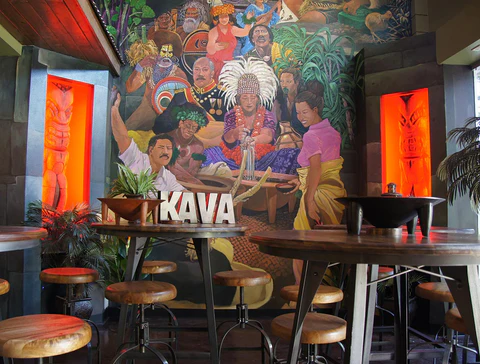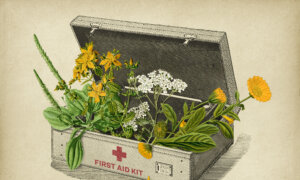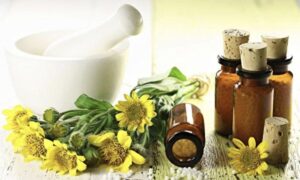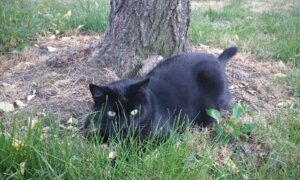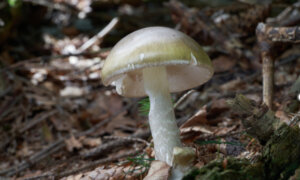American kava culture is inspired by the hundreds of nakamals (kava bars) in the Melanesian island country of Vanuatu in the South Pacific, where locals go to buy coconut shells full of kava tea to drink, sit at picnic tables, and relax with friends or conduct casual business, Tyler Blythe, co-founder of the Root of Happiness Kava Bar, told The Epoch Times via email.
American kava bars are modeled after these nakamals and serve much the same purpose: a place to enjoy kava tea while providing an alcohol-free social environment that is free from the headaches of alcohol consumption, Blythe said.
With co-founder Travis Lowin, Blythe runs four kava bars in northern California, located in Sacramento, Roseville, Davis, and Rancho Cordova.
Kava is made from the roots of the tropical kava plant (Piper methysticum) that is cultivated throughout the Pacific Islands—Hawaii, Tahiti, Samoa, Tonga, Vanuatu, Fiji, Papua New Guinea, the Solomon Islands, Micronesia, and others.
Traditionally, the plant’s roots are dried and ground into a fine powder, which is mixed with water to create a drink and is often sipped slowly, according to Ocean Beach Cafe, another kava bar in San Francisco.
Scientific studies suggest that kava originated in Vanuatu and dates back over 3,000 years for social and ceremonial use, according to Guampedia.
“Kava can benefit so many people in Western societies owing to its stress relieving and mood elevating properties that don’t come with addiction or intoxication. With that said, everything in moderation,” said Blythe.
The décor of each Root of Happiness location reflects the mellow feeling of the drink and draws from elements of the Polynesian, Melanesian, and Micronesian cultures.
The Sacramento location features hand-carved Marquesan trim, a koa wood floor with repeated Polynesian patterns etched in, and two large tiki statues overlooking the room. The Davis location has a large, colorful mural representing kava-drinking cultures throughout the South Pacific and depictions of King Kamehameha of Hawaii and King George Tupou of Tonga.
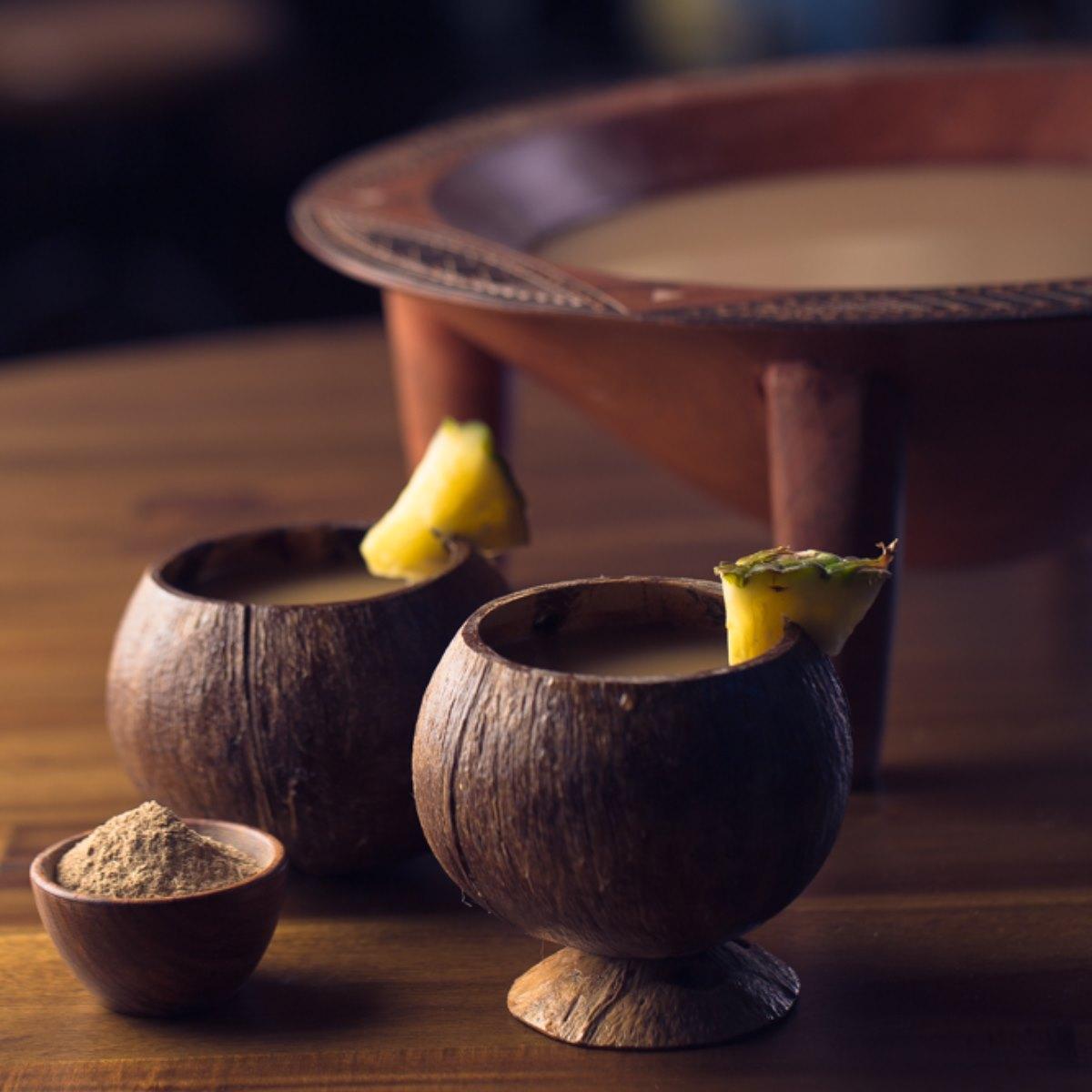
Kava tea is served in a traditional bowl and cups. (Courtesy of Root of Happiness)
“The ceremonial aspect of kava is a very important aspect of the plant’s tradition and history in the Pacific. ... In short, each culture has different ceremonies surrounding the harvesting, processing, and drinking of kava. This is the formal way of drinking kava,” Blythe said. “While this is still practiced in the islands for formal ceremonies, 98% of daily kava drinking is done in informal, social settings.”
According to the Root of Happiness website, kava is also called kava kava and several other names. In Vanuatu, it is called kava or malogo; in Fiji, it’s called Yangona or Grog; in Samoa and Tahiti, it’s called Ava; in Hawaii it’s called Awa; and in Micronesia, it’s called Sakau. Sakau refers to both the plant and the herbal brew made from its roots that is strained through the bark of the sea hibiscus tree, adding an extra element.
“I think it’s called Kava Kava sometimes because it’s fun to say! This double-word term came to be used at some point in the past, and it had a stickiness that remains today,” Joshua James, owner of Ocean Beach Cafe, told The Epoch Times via email.
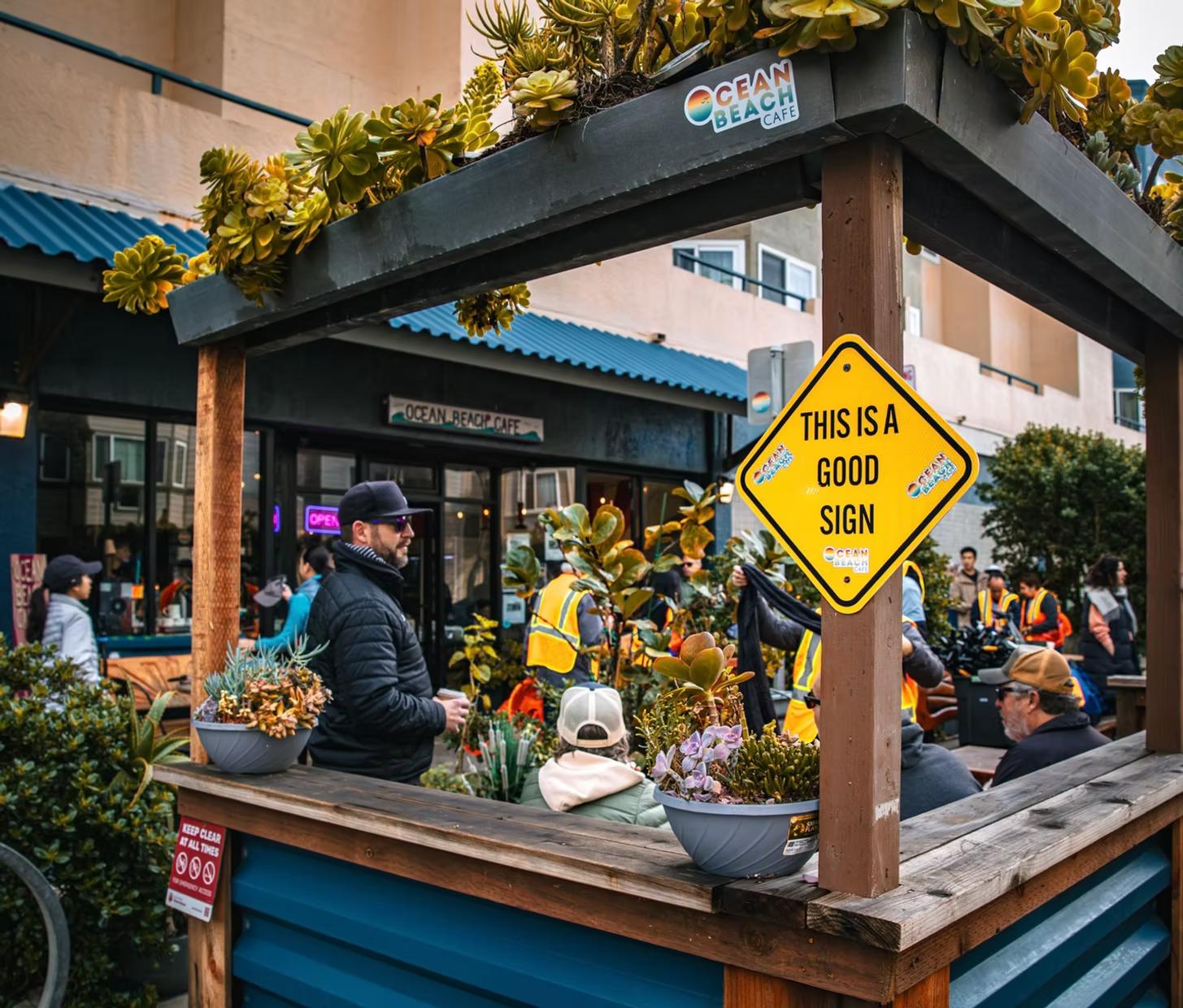
The entrance of Ocean Beach Cafe in San Francisco. (Courtesy of Ocean Beach Cafe)
“Kava is the term used by those in the industry. The Hawaiian term is ‘Awa’ (with the ‘w’ sounding like a ‘v’), and in Hawaii, you could hear both of these names being used. ‘Kava Kava’ would be something used more by the tourists.”
Blythe said kava, given its relaxing nature, is usually consumed after work, though there are many people who find kava enjoyable to pair with work, perhaps in the same way that a yerba mate or tea or coffee pairs well with certain assignments.
He said that kava can relax the nerves and focus the mind, which is difficult to do with traditional stimulant beverages like coffee and tea.

Kava tea served with pineapple on top. (Courtesy of Root of Happiness)
A 2003 study published in Neuropsychopharmacology found that there is “no conclusive evidence that Kava interferes with normal cognitive processes.”
He said he noticed that there is a minority of the population whose bodies don’t agree with it as much as others and that one should not be operating any machinery or driving while consuming kava.
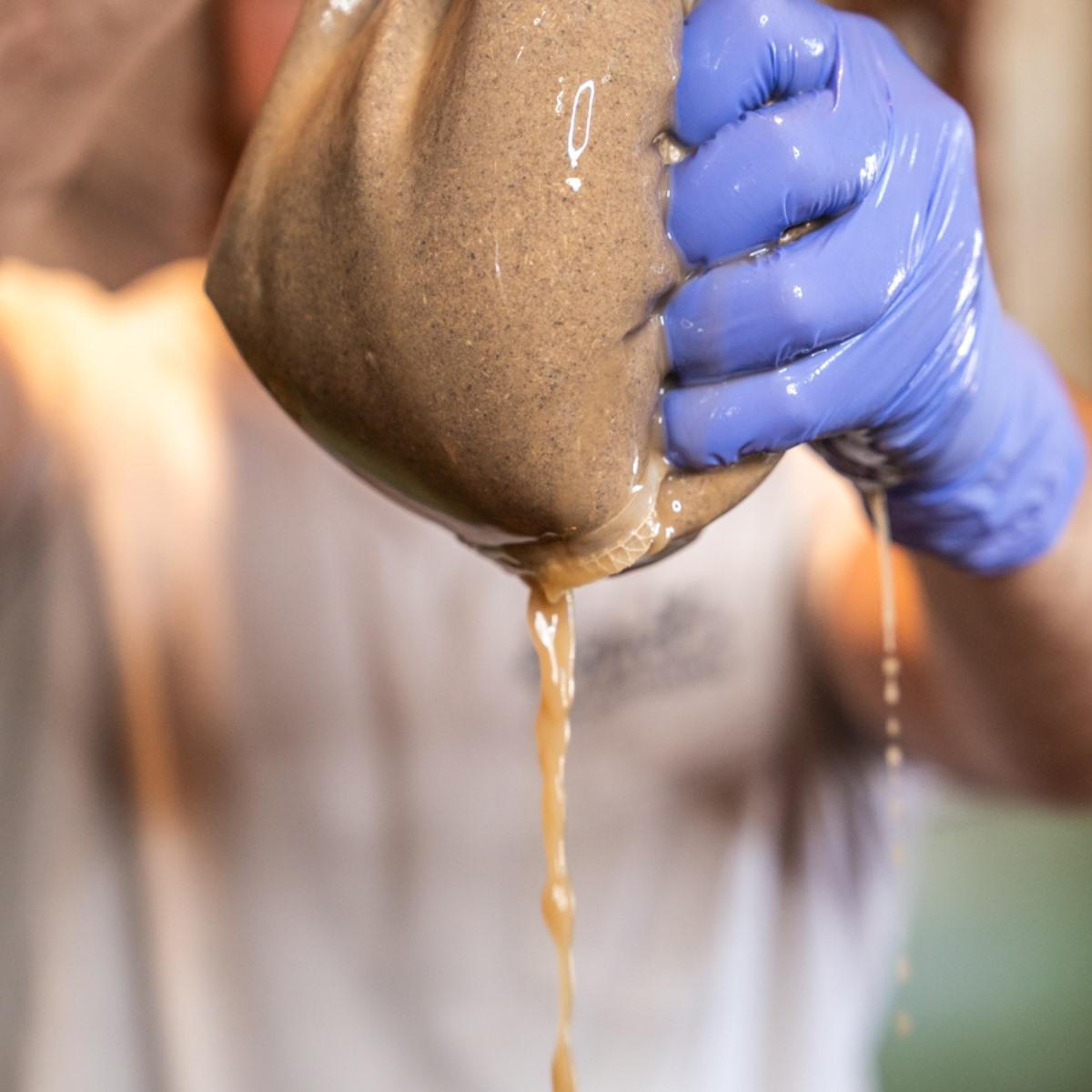
Powdered kava roots are pressed to make kava tea. (Courtesy of Root of Happiness)
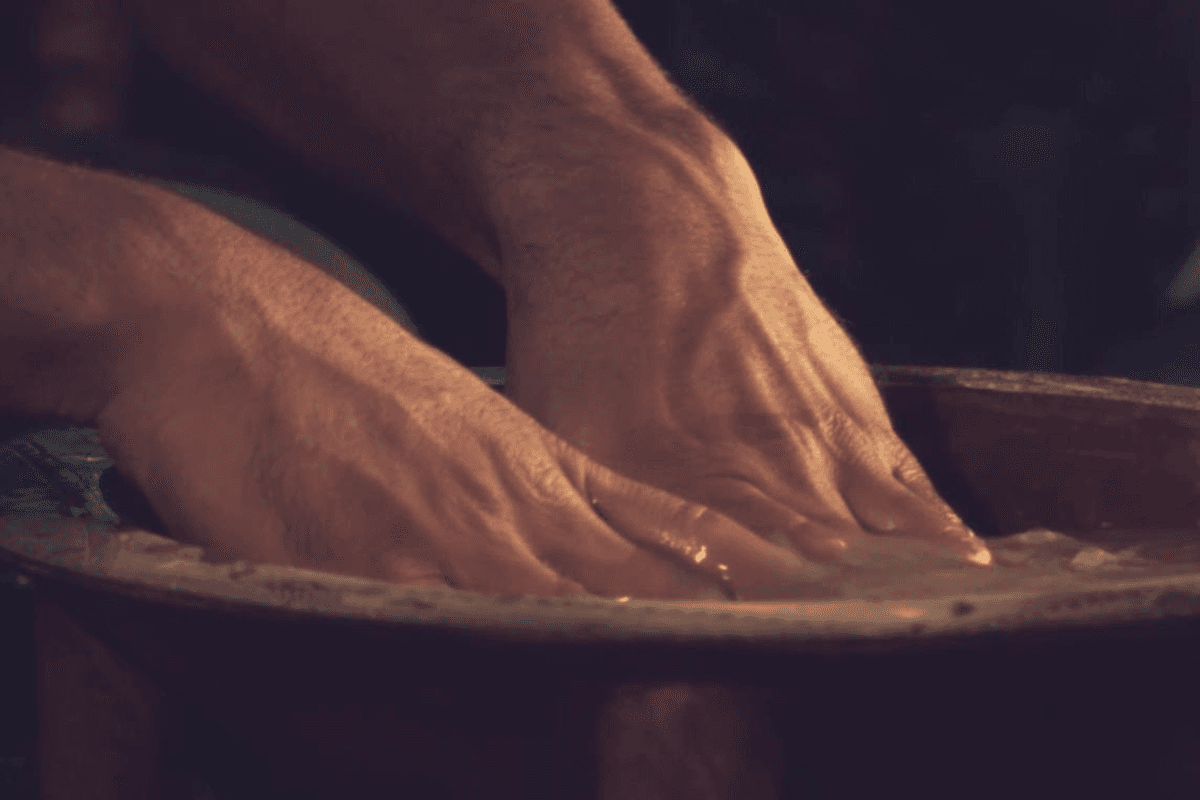
Powdered kava roots being massaged. (Courtesy of Root of Happiness)
James said that kava was originally for royalty and was a communal drink in Polynesia that was served in a special way—scooped out of a large wooden bowl full of kava root that has been massaged into the water, into coconut cups for people to drink. Regarding people he knows who grow and cultivate the plant, he said they have a deep respect for it and a connection with it. He said they are always so proud that they get to work with it.
He said it’s great to see kava lounges inspired by history, popping up all over the United States.
“I serve it down by the beach in the afternoon! We sell more Kava at my Ocean Beach Cafe than anyone in San Francisco right now. It’s definitely one of the most popular things that are bought at my shop,” he said.
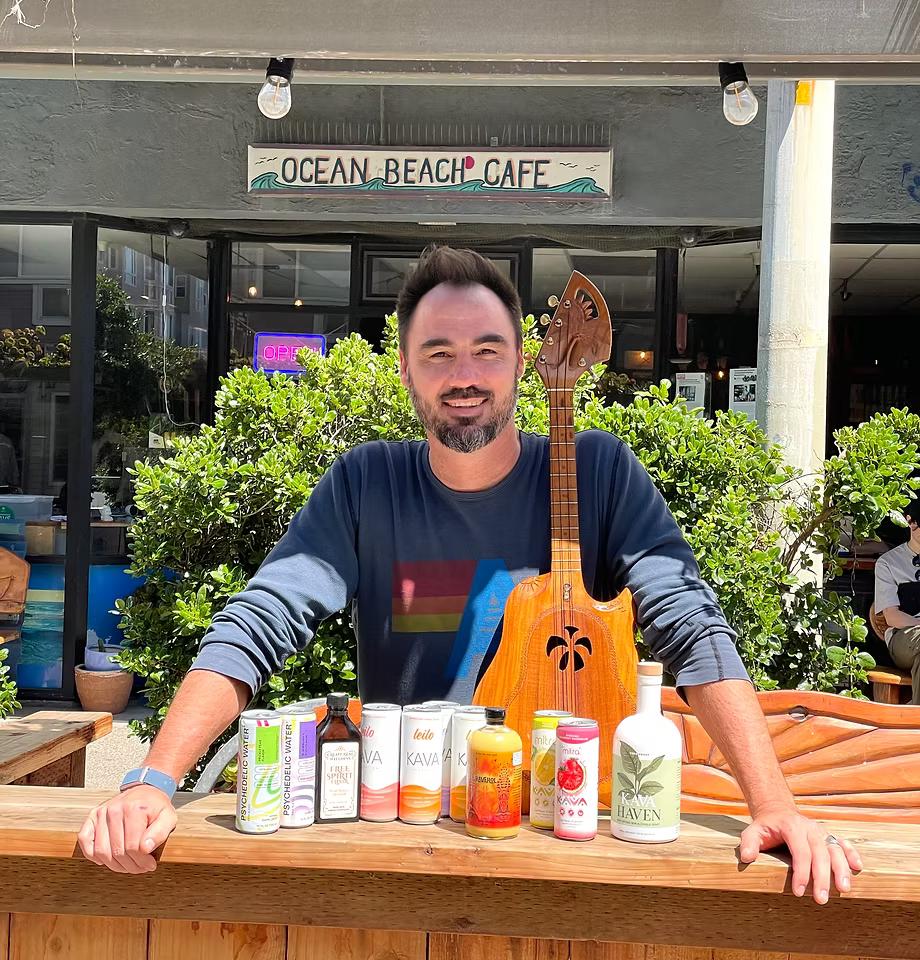
Joshua James, owner of Ocean Beach Cafe in San Francisco. (Courtesy of Ocean Beach Cafe)
Blythe said there is a movement called American Kava Culture that is growing kava domestically in Florida to supply the industry with high-quality kava that meets FDA standards, grown on USDA-registered farms.
He said that within the next five to 10 years, America will have a domestic crop of its own to supply its market, giving consumers the option to buy local and offset the environmental impact on the islands from things like fertilizer and erosion that the current demand is placing on their delicate ecosystems.

Kava plant extract. (Courtesy of Root of Happiness)
“For example 75% of Micronesia’s primary forests are now cut down to plant Kava. … As the demand for Kava grows another 10 fold, what will the environmental impact on these small islands be?” Blythe said. “American Kava Growers are working hand in hand with the Pacific to take some of that burden off while still ensuring that the Pacific is not cut off from market access, but can continue to grow sustainably.”
Blythe has farms known as the American Kava Growers Cooperative, with two privately owned USDA-licensed nurseries in Sarasota and Boca Raton. Several contract growers in South Florida are provided with varieties that thrive in the local climate.

A kava plant. (Courtesy of Root of Happiness)
His farm’s plants are grown out for two to three years and are the equivalent of three- or four-year-old plants grown in the South Pacific owing to South Florida having more hours of daylight compared to the Pacific Islands. His varieties were developed through an accelerated selection process and are fast-growing and pest- and disease-resistant.
“It’s an exciting time for kava in America,” Blythe said.
James said his first experience with kava was at a young age when he first moved to Oahu, Hawaii. He had neighbors who were Tongan, and they showed his family what it was. He never consumed it much at that time but experienced it more when living on Kauai later on.
“A good friend did popup Kava bowl events and I got to know a lot more about the root from there. For the last 5 years I’ve had GREAT interest in it because it’s already established as a social beverage that gets people together,” he said.
However, James said Fijian ancestors would probably roll in their graves if they saw how kava is now concentrated and put into fancy cans and made into beverages with ginger juice.
“It’s very difficult to make Kava taste good, but I have found a way and these are some of my favorite drinks right now,” James said.
Root of Happiness has kava for sale on its website, and it recommends AluBall shaker cups from Getkavafied.com to make a quick tea because they are easy to use for new or experienced kava drinkers, and they allow you to make a specified amount for the night. Kavafied founder Matt Masifilo, a Tongan American and former NFL football player, made the shaker cup as a way to make kava more accessible to more people.
An Herbalist’s View on Kava
“There is no harm in drinking occasionally at the Kava bar,” Pam Fischer, a clinical herbalist, told The Epoch Times via email. “In Fiji the islanders drink Kava-Kava all day. The Islanders have a deep spiritual relationship to the plant, and have rituals they use in making it.”
Fischer said that when someone consume a plant such as this, they should treat it with respect. Meeting friends after work for a drink is a ritual in itself, and the plant can aid in heartfelt conversation, she said.
She said she is inspired by the multifaceted aspects that such herbs provide in healing.

A kava plant. (Courtesy of Root of Happiness)
She said herbs work on the physical body, emotional being, and spiritual aspects of human consciousness. With that, she was drawn to study the power of such plants to heal someone on all levels of disease.
She said kava is a nervine and a muscle relaxant.
Fischer also cautioned that kava is a nightshade plant, so if you have a nightshade allergy or sensitivity, do not take it. Also, kava should not be used with people on antidepressant or anti-anxiety drugs.
With kava being sold more processed and in aluminum cans, she said these shortcuts can cheapen the experience and the product, though from a business point of view it extends the product’s shelf life and can increase sales and profit margins; also, the drink might still be a comfort to someone who is suffering.
Fischer said that in Hawaii, when the plant became popular, the price shot up, and suddenly growers experienced people stealing their plants.
“The Kava growers’ remedy was to plant more, providing more than enough for all. Kava is generous,” she said. “It is said that you cannot lie when taking Kava. Still today in Fiji when an Islander is doing business before signing contracts they bring out the Kava bowl and drink from it.”
In Fischer’s practice, she uses small amounts to calm the central nervous system in times of stress, noting that a few drops generally calm a panic attack.
